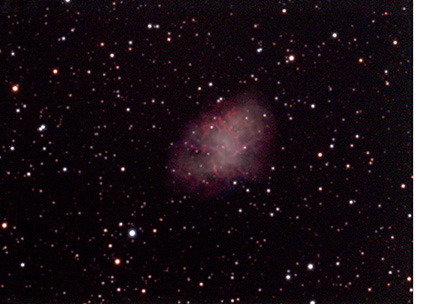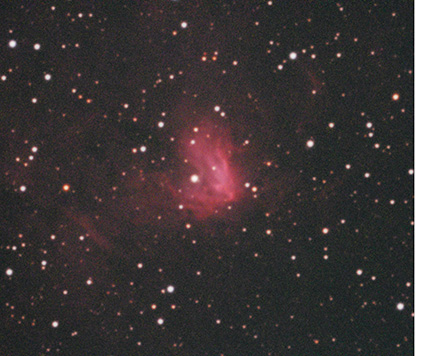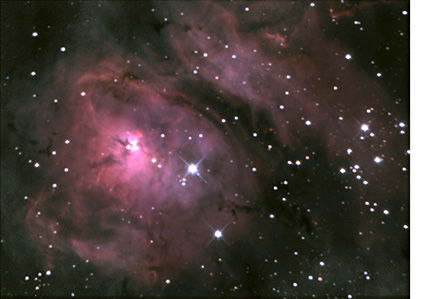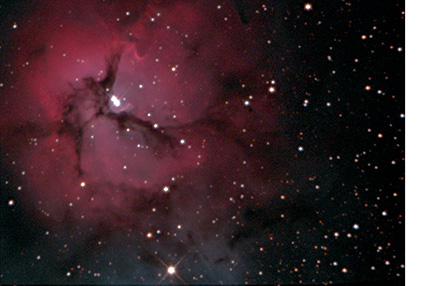Boyd Observatory
Here are a few examples of recent images
Page two, Page three , Home
The images you see here were all made with the observatories Newtonian telescope. The telescope has an aperture of 444 mm, a focal length of 1987 mm. and operates under Bortle class 5 skies. The cameras in use are the SBIG ST-2000 XCM and ST-2000XM. Filter and optical correction are provided by a Baader Planetarium 2 Mark III Multi Purpose Coma Corrector - MPCC and a SkyTech LPRO MAX 2inch CCD Filter The images are stacked result of as many worthwhile sub images as I could collect. Due to the limitations imposed by the large size an weight of the telescope, exposures for each sub image are limited to about sixty seconds and real time corrections to the guiding are required. At the time of this writing I am averaging only about one useable image for every three or four I collect. However, I am hoping to refine both my equipment and technique in the future. Fingers crossed.

M1 The Crab Nebula
Supernova Remnant imaged Dec. 9, 2020
This is my 27 minute exposure of the Crab Nebula in Taurus. The nebula was discovered by English astronomer John Bevis in 1731, and later observed by Charles Messier. located 6,500 light-years from Earth this is a favorite object for astrophotographers. The night this image was made the seeing was about as steady as it ever gets in my area and this image is the best twenty seven of seventy exposures made that evening. Each exposure was sixty seconds.

NGC 1491
Bright nebula in the constellation of Perseus Imaged Dec. 25, 2020
NGC 1491 is a bright emission nebula. The nebula is energized by the hot, massive stars embedded within and glows in the red light of hydrogen. While it was not my plan to image this particular subject on Christmas night, when I came across it I just had to give it a try. The image a stack totaling fifty seven minutes. A nice way to spend an evening after every one else has gone to bed.

NGC 891
The Silver Sliver Galaxy Imaged Nov. 17, 2020
NGC 891 is an edge-on unbarred spiral galaxy about 30 million light-years away in the constellation Andromeda. It was discovered by William Herschel on October 6, 1784. This image is the best of two nights work. With poor seeing and a rising moon I was only able to use thirty two minutes of data out of one hundred and fourty collected.

M8 The Lagoon Nebula
Stellar Nursery Imaged Aug. 8, 2020
The Lagoon Nebula, M8 was discovered in 1654 by the Italian astronomer Giovanni Battista Hodierna. The nebula is located 5,200 light-years from Earth in the constellation Sagittarius. This image is the sum of twenty four sixty second exposures.
